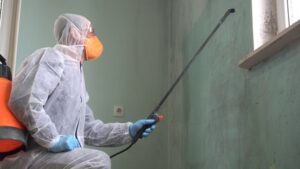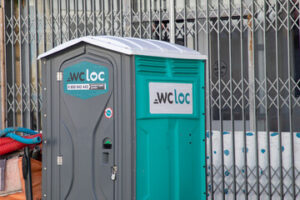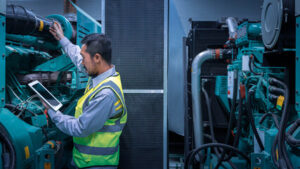Maryland Window Replacement can boost home value, reduce energy costs, and add comfort. But it’s important to consider the upfront cost and choose a reputable installation company.

If your windows are drafty, have condensation between the panes, or show signs of rot, it’s time to replace them. A quality installation will ensure accurate measurements and tight seals, minimizing future repairs and damage.
Energy efficiency plays a major role in the lifespan and payback of replacement windows. The frame material and type of glass significantly impact energy efficiency, with vinyl frames and fiberglass delivering better insulation than wood-framed models. Multi-pane windows and insulated argon gasses are also essential features to consider when selecting the right replacement window.
The insulating properties of new windows are enhanced by airtight designs that reduce heat transfer and air leakage. Fusion-welded frames and wet glazed sashes, along with warm-edge spacer bars, help reduce the number of holes where outdoor air can seep into your home.
In addition, new replacement windows can help homeowners save money on their energy bills. ENERGY STAR estimates that homes with new ENERGY STAR windows reduce their household energy consumption by up to 11%, saving them $100-$500 on their utility bills each year.
There are several factors that impact the energy-efficiency of new windows, including:
The U-factor displays how well a window blocks heat from the sun. A lower U-factor means that your replacement windows are more efficient, allowing you to use less energy to heat and cool your home.
Other factors that influence the energy-efficiency of replacement windows include:
Style
Choosing the right windows plays a significant role in your home’s aesthetic, ventilation requirements, and overall functionality. That’s why it’s important to partner with a local window company that understands your climate and building codes and can recommend the best options for your unique needs.
Reece is committed to providing homeowners with windows that fit the style and design of their home, while also delivering superior energy efficiency. Whether you want to upgrade your curb appeal, reduce noise pollution, or increase ventilation, our experts can help find the perfect solution for your needs and budget.
Window styles vary from double hung windows, which feature two operable sashes that open vertically, to sliding windows, which are ideal for spaces where swinging-out windows would interfere with traffic patterns or landscaping. Then there are casement windows, which are known for their durability and versatility, and awning windows, which can be used in tight spaces where swinging out isn’t an option.
There are also many different frame materials available, each with a unique set of benefits and drawbacks. For example, vinyl replacement windows are an affordable and durable option, while wood-framed windows provide a high level of craftsmanship. And if you’re looking for the best of both worlds, consider hybrid windows, which combine the advantages of both vinyl and wood to deliver the most comprehensive performance.
In addition to a variety of styles and features, Reece also offers window replacement options that allow you to preserve the existing frames, trim, or siding on your home. This method, called pocket replacement, is a cost-effective alternative to full-frame replacement and can result in a faster installation process. However, the success of this method depends on the condition of the existing frame and may result in a smaller glass area and less customization.
Comfort
Your home’s windows play a vital role in regulating indoor temperature, managing natural light, and providing sound insulation. Over time, they can deteriorate due to age and use, causing drafts, higher energy bills, and poor home comfort. Window replacement is an effective way to improve your home’s efficiency, curb appeal, and safety, while increasing its value.
High-performance replacement windows are designed to actively reduce your home’s energy costs, while improving indoor comfort and enhancing the beauty of your house. Advanced features such as Low-E glass coatings, insulated frames, and argon or krypton gas fills help regulate indoor temperatures by reducing heat transfer. This minimizes the workload on your heating and cooling system, resulting in lower energy bills throughout the year.
Energy-efficient windows also enhance the air quality of your living space by preventing moisture and harmful outdoor pollutants from entering your home. This creates a healthier, safer, and more stable environment for your family.
Difficulty opening, closing, or locking your current windows may be a sign that they are in need of replacement. Cracked or chipped glass, condensation between the panes, or rotting wood can also indicate that they are in need of an upgrade.
If your windows are letting in too much external noise, you should consider upgrading them with modern double- or triple-pane windows with insulated casings. These windows reduce sound transmission and create a more peaceful, tranquil living space for relaxing and working. Today’s windows are also designed with security in mind, featuring stronger frames and advanced locking mechanisms that make break-ins more difficult. They are an investment that will provide you with years of energy savings, increased comfort, and added safety.
Maintenance
When it comes to your home, windows play a huge role in curb appeal and resale value. Choosing replacement windows can add energy efficiency, comfort and durability, while also giving your house a fresh new look. But when it’s time for replacement, how do you know what type of window will best suit your home? Here are some factors to consider:
While it’s true that no window will last forever, the lifespan of your windows is impacted by their quality, installation and maintenance. Typically, a free-standing window will have an average lifespan of 15 to 20 years. If you notice that your windows are leaking, are becoming increasingly difficult to open or close, have cracked glass or have rotting frames and sills, it may be time for replacement.
The cost of replacing your windows will vary based on the size, style and material you choose. Window replacement is an expensive project, so it’s important to find a contractor that can provide you with the most competitive price and quality window.
Alternatively, you can opt for a retrofit installation where the window unit is installed into an existing frame (this method also known as “pocket” or “insert” installation). In this case, the original window trim and casing is preserved, while the old window sash is removed to allow for the installation of a new replacement.
The main benefit of a retrofit is that it minimizes the impact on the exterior of your home, and also allows for the upgrade to more energy-efficient windows without extensive structural modifications. However, this process can be more labor-intensive and costly for the contractor as they must carefully remove and replace the existing interior trim, and measure the rough opening to ensure that the new replacement will fit.


